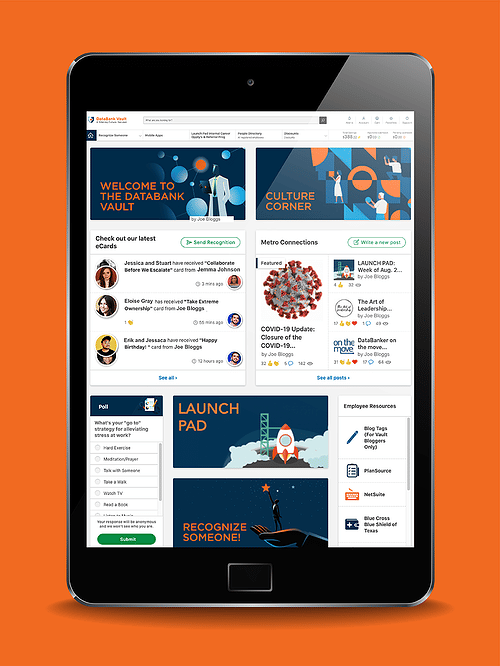A company culture with employees pitting against each other in a gauntlet-style brawl will never yield the best results. Instead of having employees compete in hoarding information, companies should promote a knowledge-sharing culture as part of their work routine.
The knowledge-sharing process at the workplace creates space for open communication on the lessons, wins, and losses that employees are experiencing. However, effective knowledge-sharing can only happen when the company’s technical infrastructure and culture are aligned toward open communication.
Why should you have an open knowledge-sharing culture? Here are a few reasons why:
- Psychologically employees will feel safe and more confident at work since they can air out their struggles and concerns
- Decrease in employee turnover
- Overall productivity will increase with seamless knowledge passing between teams.
Panopto surveyed 1001 US employees across different industries on institutional knowledge-sharing. Panopto calculates that, on average, businesses lose $2.7-275 million in productivity due to poor knowledge-sharing. The figures increase with the size of the company.
Here are ways to create an effective knowledge-sharing culture at your workplace:
1. Reward Knowledge-Sharing
There were days when employees were expected to cow and not dare be heard until the workday was done. Those days are gone. Leading market leaders now understand the need for collaboration, knowledge-sharing, and encouraging employee input.
Of course, this will take time since not everyone is equally comfortable with opening up. Sometimes, some employees need a nudge and a comfortable space that inspires them to share.
For instance, data center operator Databank launched a rewarding and knowledge-sharing platform in July 2020. Approximately a year after the launch, 97% of employees were active users, which was, on average, 2,500 logins monthly. Since then, more than 2900 recognition moments have been sent, including non-monetary and monetary awards.
As a result, 93% of employees have either sent or received recognition. In addition, Databank has also seen an increase in leadership participation, with 62% of the recognitions sent by managers.
Source: DataBank
Here are some ways to reward knowledge-sharing:
- Make time for employees to jump right in, share their input, and collaborate. Some employees enjoy this, so encourage them to continue doing this and encourage others to do the same.
- Regularly share content and knowledge from the top-down with employees. That shows workers that the management also embraces the knowledge-sharing culture and collaboration.
- Knowledge-sharing doesn’t come naturally to everyone in the team, so give employees an incentive when they share relevant knowledge. You can do this by; offering rewards such as coffee shop gift cards to employees who participate or putting up participant employees’ names into prize draws for fun items like backpacks, mugs, or a barbecue grill.
- Employees also enjoy giving and receiving praise and recognition from their peers for their contributions via personalized messages.
Recognition and gamification systems with a system of awarding points and redeeming for employee actions have recently gained popularity. Most companies are taking it up as an efficient way to engage employees and foster collaboration between teams.
2. Use the Right Tools for Knowledge-Sharing
The technical tools that employees use to get the job done are one of the core company pillars in infrastructure. Therefore, finding the right tools and software correlates with employee productivity. As a result, it’s also key to creating an effective knowledge-sharing culture.
Using performance management tools is a logical starting point. But it can go further than that. For instance, Atlassian uses Confluence and Slack for its knowledge-sharing.
Source: Atlassian
Companies can share information, have meetings, create strategies, and update each other on learning processes, wins, and failures with the right tools. With tools such as Confluence, companies can keep all the work open so every employee can access the company’s collective knowledge. You’ll also want to have a selection of departmental tools staff can access. For example, you’re SEO team might need access to a tool like Surfer SEO to optimize content.
When building a product, it’s essential to combine multiple tools to eliminate over-reliance on Emails, which often slows open communication in a knowledge-sharing process. For example, teams can have quick discussions on Slack and contextualize the Confluence feedback for posterity.
3. Create An Open-door Policy
An open-door policy is a workplace rule that encourages workers to comfortably discuss relevant work-related input with the immediate supervisor or senior project manager. Highly productive work environments with open communication encourage knowledge-sharing horizontally between team members and vertically between leadership and workers.
For instance, Keka highly encourages the use of open doors, both literally and figuratively. That allows teams to communicate in person regularly and virtually.
Source: Keka
As seen, this open-door policy clearly outlines the boundaries and expectations. They do this by including the type of relevant topics for discussion and how to have discussions that resolve issues effectively and promptly.
Here are a few ways to create an open-door policy in the company:
- Add this policy to the company handbook. That helps make it official, so employees will know how to go about it. It also adds more accountability for team leaders to follow this policy
- Regularly discuss how this open-door policy works and communicate the expectations
- Set clear boundaries. Open and direct lines of communication with corporate leadership are great, but without clear boundaries, it could also lead to a decrease in productivity.
- Actively listen to employees’ input.
- Address the concerns promptly.
A company cannot have a knowledge-sharing culture without trust. An open-door policy helps you to connect with new hires so they can feel comfortable enough to approach anyone and ask questions. They shouldn’t feel like they’re being judged for asking or not knowing something.
4. Establish A Mentorship Program
Mentorship involves a learning process where external or existing staff members guide the new employees or less-experienced workers in a task. That is one way to create a knowledge-sharing culture and help develop professional skills and competencies.
It is also a great way of attracting top talent. Without this, companies lose valuable time when the new recruitee is too nervous about sharing their skills or knowledge. For example, mentors who don’t use buzzwords when explaining processes help foster a comfortable interaction with new hires.
For instance, Schneider Electric came up with a three-part strategy to nurture its talent pool internally. As a result, within the first two months, 2300 employees, on average, had begun exploring the platform. As a result, 127,000 hours of hidden capacity were unlocked, and they achieved $ 15 million in productivity gains.
Source: Schneider Electric
Relationships within the mentorship processes are divided into; informal mentorship, which is spontaneously initiated by interest, or formal mentorship, which the organization initiates.
To successfully establish a mentorship program:
- Make sure it’s solving the apparent need
- Keep the number of each group to a minimum
- Set goals in the first meeting
- Mentors and mentees should be primarily located in the same team or office, with a few from different teams for collaboration.
- Involve the executive teams
Apart from giving information, the mentor should also set a good example, encourage them to speak their mind, and not hesitate to contribute right away.
5. Let Employees Know that Mistakes Are Okay
For employees to freely share ideas and collaborate without holding back, they need to work in a culture that allows for mistakes. After all, mistakes help people to learn better.
If the company management only talks about perfect company practices, employees will feel that there’s no tolerance for mistakes or falling short on the mark. Instead, it’d be more productive to share different case studies, including triumphs and failures. Sharing past mistakes helps the team learn what to avoid moving forward.
According to Panopto, 42% of valuable industry knowledge is unique to each individual in the company. Letting this information evaporate since team members are hesitant about sharing it is a costly mistake that results in companies losing $40.6M in annual productivity. In addition, due to inefficient onboarding processes, inefficient knowledge-sharing, and timid sharing practices, businesses lose a further $4.2M.
Source: Panopto
Only sharing good examples also undermines the efficiency of creative thinking. People come up with great ideas based on the worst-case scenarios.
Management should understand that employees making mistakes is also an indicator that they’re trying to find the best solution. In addition, it also helps build a sense of community and trust.
In Closing
Sharing knowledge is critical to the survival of any business since it fosters sustainable innovation and the application of new knowledge. That gives the company a competitive advantage. The knowledge-sharing culture starts with the individual, but some employees will need some form of support and encouragement.
The company management should always lead by example while creating a knowledge-sharing culture. Remember, creating this culture in the business will take a while for employees to adjust.
That will apply especially if they’ve worked in aggressively competitive environments, where fellow employees are a potential threat. The company’s goal here is to demystify this myth. Best of luck!










Leave A Comment